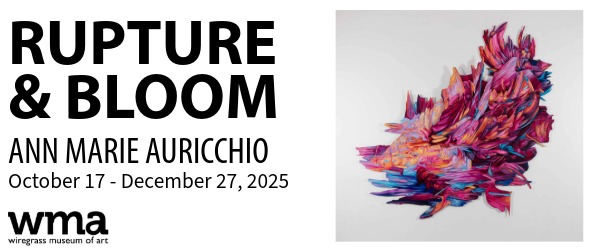
Contributed by Kristen Clevenson / The Price of Everything (2018), a documentary film directed by Nathaniel Kahn, seeks to assess the impact, influence, and inescapable role of money in the art world. In November, I attended a screening followed by a panel discussion featuring Pulitzer prize-winning art critic Jerry Saltz, Hunter College professor and chair of art history Howard Singerman, artist Larry Poons, and Debi Wisch, one of the film�s producers. The conversation ranged from disturbing to comical to genuinely illuminating. As for the film itself, it is not so much an earnest exploration of the �truth� about money and the art world as an unabashed showcase of both the empty sensationalism and banality that the subject evokes. In that sense, it usefully sets up targets for those who may be distressed by the mercenary focus of the contemporary art world.
This depiction of the “art world” in its various aspects was abjectly depressing. The film goes behind many well-guarded doors: the auction house, the art fair, the artist�s studio, and even the art storage facility. Artist Jeff Koons, preening in his studio, is thoroughly unlikable. Without a trace of self-consciousness, he contends that since he makes every creative decision, a painting is still entirely his own even though it is produced without his ever touching paintbrush to canvas. Reviews have reproduced a picture of Koons alone in front of a gazing ball, rather than standing in the center of a large studio where nearly a dozen young artists paint for him � the ultimate puppet master. Amy Cappellazzo, chairman of the Fine Art division of Sotheby�s, displays a showy attention to detail and a reverence for great art that comes across as crass and opportunistic. After witnessing the opulence these two enjoyed, upon entering Poons�s modest, workaday studio, the crowd emitted exclamations and laughter. The message seemed to be an abrasive � and momentarily convincing � “you can’t handle the truth.”

But we could handle it, and that was at least some reward. When a collector, overcome with emotion, nearly cries as she describes a Damien Hirst work � pink with butterflies � that she had seen at an art fair, the audience laughed. Poons himself is a foil to personalities like Koons and Hirst: an artist willing to admit that people think he�s dead, able to turn call out the Sotheby�s employee who said he was a huge fan of his work for specifying only the early stuff, and, perhaps most winningly, poor enough to elicit sympathy. Juxtapositions like that of Koons and Poons constitute a virtue of the film, though it may be inadvertent. They raise important questions. If I like Koons�s work, for example, why does his puppet master shtick sicken me? Why are garden-variety art aficionados allowed to cry in front of a Mark Rothko painting without being judged while rich people are mocked for their teary embrace of a Hirst? Why is the myth of the reclusive art genius so alluring? Why do we presumptively devalue wealthy people�s experience of art, and is it fair?
The Price of Everything is not itself artless and can be stirring: a shot of turbulent water jumping and splashing around in a reflective gold bowl, a jump cut to the exterior of the Guggenheim, a shot of Maurizio Cattelan’s famous toilet. Some in the audience gasped as the camera crept through a forest of books to reveal the unmistakable mustache of Him � a second Cattelan sculpture that depicts Hitler, kneeling and child-like. A savvy classical score generates some obligatory tension. For me, the most cathartic � indeed, tear inducing � moment was the Poons exhibition. Only then are viewers indulged still shots of artwork � framed, well lit, revered. Beautiful paintings filled the screen.
The problem with the movie � and it�s a big one � is that it apparently intends no criticism of the dynamics it portrays and registers no real irony. During the discussion, Wisch obtusely cast it as a “theatrical experience that showed a slice of the art world ‘today.'” If its ambition is that comprehensive, the movie is not only fatuously one-dimensional but also offensively didactic, advancing the filmmakers� biases about art as objective truths. Lucy Riley � an MA student at Hunter � asked an incisive question: if this is all about the money, power, and art, where are all the unpaid interns? Wisch responded that she and her colleagues wanted to give the audience tangible characters on which to focus and to get to know. The pandering condescension was straightforward: an unpaid intern or gallery helper evidently lacked sufficient substance to be included in a movie about the art world. Ultimately, The Price of Everything does little more than present, with tacit approval, stereotypes that may be true but warrant not perpetuation but challenge. That a crude operator knows the price of everything but the value of nothing is a familiar dig. Here, it fits.
The Price of Everything, directed by Nathaniel Kahn. Produced by Jennifer Blei Stockman, Debi Wisch, Carla Solomon. Produced by Hot & Sunny Productions LLC. Streaming on HBO Films.
About the author: Kristen Clevenson is an MA candidate in Art History at Hunter College. An art historian and independent curator, she also works as a Research Assistant / Gallery Intern at Acquavella Galleries in New York.























Kristen: A beautiful article. Thank you for sharing your writing with us. We enjoyed reading it. Very proud.
Thank you for this perceptive and accurate article.
The film, “The Price of Everything” though shallow and depressing is enlightening in spite of itself. It demonstrates how in our Capitalist/Consumerist culture the paramount value of Art is what someone will pay for it. The “art world” is a playground for the uber wealthy and the artist is a production worker�the maker of products and entertainment to be marketed like any other.